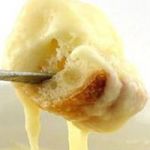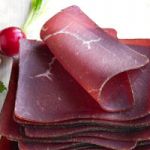 |
A culinary journey through Switzerland
Discovering the multi-faceted cuisine of Switzerland involves a journey through its cantons. The omnipresent fondue is made with different cheeses from one region to another, varying even from village to village. White wine is found everywhere, but differences in climate, terrain, grape varieties and production methods mean that Swiss wines are surprisingly diverse in flavor. To give a true sense of Swiss cuisine requires putting centuries of tradition on the table – so here we’ll try to offer an overview of some delicious regional specialties, just to whet your appetite. First of all, between the lakes and mountains, there is a culinary dividing line that has been naturally drawn along linguistic lines. If you lift the lid off the stockpot, you’ll find something different depending on whether you’re in a French, German or Italian-speaking region.

- Berne (BE) - a German-speaking canton, though many people there speak French, as in most Germanic cantons
- Fribourg (FR)
- Genève (GE)
- Jura (JU)
- Neuchâtel (NE)
- Vaud (VD)
- Valais (VS) - (the Upper Valais speaks german)
Gastronomically speaking, Vaud is today probably the richest of all the cantons. Contrary to popular belief, the cuisine of Vaud is not limited to boutefas (a kind of pork sausage), malakoffs and “beignets de Vinzel” (cheese fritters). It has many little dishes and regional specialties, all enjoyed with local wine from the vineyards of this hospitable land.
To learn more…
Autumn in Switzerland has an elusive quality that makes you want to wander through Fribourg. During the second week of October, take in “Bénichon,” the name given to the festival that marks the cattle’s return to the plains after having spent more than four months in alpine pastures. Traditional dishes includes cabbage soup, the famous local ham (“jambon de la borne”), leg of lamb, double cream and meringues as they have been made for centuries in the region’s villages.
Nor can we overlook the wonderful little medieval burg of Gruyères, surrounded by the Pre-Alps region of lush pasture lands. To learn more…
The hospitality of Jura, Neuchâtel and Fribourg will lead you to some happy discoveries of typical regional specialties, such as cream and cheese from Gruyères, Tête de Moine (“Monk’s Head”) cheese, sausage, fondue and fruity white wines.
With more than 100 km of border with France, Geneva has been strongly influenced by its neighbor. And sharing the same linguistic heritage as Lyon, a world capital of good eating, explains its solid reputation in the gastronomic world and the fact that its culinary specialties are closer to French ones than to typical Swiss dishes. This is the garden of Switzerland, though the vegetable most closely associated with it remains the cardoon. To learn more…
Emmental is the name of both a cheese and an attractive valley nestled in the heart of Switzerland, surrounded by appealing hills and known far and wide for its charming villages, farms and cheese producers, picturesque customs and original cuisine. To learn more…
Valais – Autumn unfolds between the Rhone valley and snowy peaks that rise to over 4000 meters in height. This is a land of vineyards, alps and glaciers, hikes and bicycle expeditions in the warm autumn sunshine, enchanting views of the mountains, hot springs on cool days, the flavor of mountain cheeses, raclette prepared over wood fire, plates of mushrooms accompanied by delicious local wines… The cuisine of the Valais makes generous use of mountain herbs; at Mund they even grow saffron above Brigerbad in the Upper Valais, and the saffron risotto from Mund has become a renowned specialty, accompanied by bacon, cooked ham and even thinly-sliced veal.

- Aargau (AG)
- Appenzell - Outer Rhodes (AR)
- Appenzell - Inner Rhodes (AI)
- Basel (BS/BL)
- Berne (BE)
- Fribourg (FR)
- Glarus (GL)
- Graubinden (GR)
- Lucerne (LU)
- Nidwalden (NW)
- Obwalden (OW)
- Schaffhousen (SH)
- Schwyz (SZ)
- Solothurn (SO)
- Saint-Gall (SG)
- Thurgau (TG)
- Uri (UR)
- Valais (VS)
- Central Switzerland (LU, NW, OW, SZ, UR)
- Zug (ZG)
- Zurich (ZH)
The culinary traditions of these regions are very different. Spend a few days in Zurich, strolling through the old town along the Limnat, shopping, or taking a boat cruise over the lake with the Alps in the background… On the menu you’ll find veal cutlets, rösti with a hint of cumin, and chocolate mousse. The cuisine of Zurich has a penchant for French influences. The whole canton is renowned for its lake fish: perch meunière, pike quenelles with lobster sauce in winter and champagne and crayfish sauce in summer, whitefish, trout… Salmon trout is becoming increasingly rare. Sage flavors traditional dishes, and may be served as an hors-d’oeuvre in beer batter or accompanying calf’s liver brochettes with bacon. Veal often appears on the menu as kidneys in a casserole with carrots and peas, but you’ll also find lamb, stuffed chops with honey and French fries. Though you’ll find white or red sauerkraut, fennel and endive, Zurich’s cooking is centered around the potato. And when it comes to dessert, expect a specialty made with chocolate or a fruit tart.
In Thoune, visit the museum of cookery, and don’t miss having lunch at the castle on the terrace facing the Bernese Alps… you’ll practically be force-fed foie gras!
An unforgettable experience in Graubunden for wine-lovers or anyone interested in the local culture is visiting a “Torkel,” or tavern. To be in the heart of wine country, on a sunny terrace with a splendid view of the Graubunden is worth the trip. Try the regional specialties, a glass of the sweet straw-colored wine, and various little local snacks like the “Torkel plate”: mountain cheese or Tschunken, thinly-sliced air-dried ham, or give in to temptation and try the walnut pie.
Speaking of which, you can’t pass by Zug without sampling the local pie made with kirsch and hazelnuts. The locals claim that they make the country’s best kirsch: boasting or just the simple truth?

- Grisons
- Ticino.
Ears of corn growing against the walls of houses, bunches of bright red grapes and orange persimmons in gardens and fields: this is the landscape of the Ticino, bathed in a kind of magical light. Long strolls beside the placid lakes are fuelled by the piquant mountain cheese and a glass of tasty Merlot.
After that, you can dawdle in the markets, trying some elderberry syrup or tasting the bilberry jam that goes so well with game dishes. And the chestnut flour noodles! A wonderful memory of last year’s visit. The shopping trip ends with a wine tasting. What would go best with game? Perhaps this fruity red with hints of vanilla, or this slightly sweet and sour full-bodied white? What else can I try, as my stomach growls and my eyes look around hungrily?
And I mustn’t forget… for the federal “fast day” that falls on the second Monday of September, plum tart is a traditional dish throughout the country. Geneva does things its own way, with the fast day held on the first Thursday of September, though the plum tart still holds pride of place. The plums in this case refer specifically to fresh “quetsches,” a dark-red variety.

-

 Recipes
Recipes
-

 Products
Products
-

 Entertaining
Entertaining
-

 Chefs
Chefs
-

 Hints & Tips
Hints & Tips
-

 Glossaries
Glossaries








